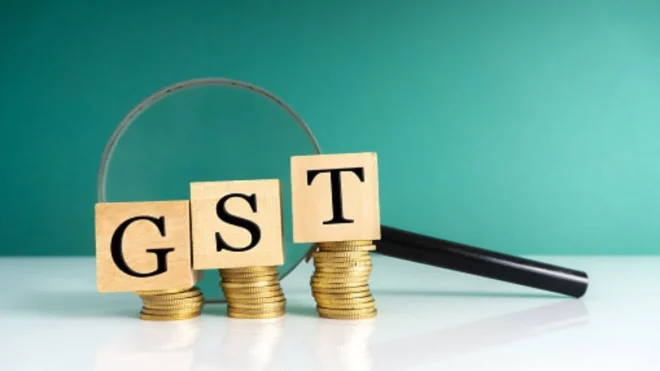India’s Goods and Services Tax (GST) reform, one of the most significant economic transformations in recent history, is on the verge of a major upgrade. Introduced in 2017, GST replaced the complex Value Added Tax (VAT) system, simplifying indirect taxation and consolidating multiple levies into a single structure. Now, the Indian government is preparing to roll out GST 2.0, an initiative aimed at further easing compliance, simplifying tax laws, and leveraging technology to promote business efficiency and economic growth.
In the Budget 2024, Finance Minister Nirmala Sitharaman highlighted the government’s vision for GST 2.0, emphasizing a renewed focus on reducing complexities in the tax structure and enhancing transparency. As industries continue to call for tax simplification, GST 2.0 is being designed to meet these long-standing demands, paving the way for smoother trade operations and an increasingly competitive business environment.
The Vision Behind GST 2.0
The original GST system was hailed as a landmark reform that unified India’s fragmented tax framework. It consolidated numerous state and central taxes, streamlined tax filing, and eliminated cascading taxes. However, as with any reform, GST has faced challenges over the years. Issues related to compliance complexity, technological integration, and interpretation of tax laws have often been raised by businesses.
GST 2.0 is set to address these challenges. According to the Finance Minister, the new version of GST will enhance tax administration through increased adoption of technology and digitization. This will not only streamline tax compliance but also reduce the scope for errors, delays, and disputes. The government’s emphasis is on making tax processes more business-friendly, with greater transparency, reduced manual interventions, and simplified filing mechanisms.
Simplifying Tax Laws
One of the main goals of GST 2.0 is tax simplification. Industries across sectors have repeatedly called for a more straightforward tax system, one that reduces the burden of compliance, especially for small and medium enterprises (SMEs). The proposed changes in GST 2.0 will introduce measures to minimize the paperwork, streamline tax refunds, and create a more intuitive filing system.
Currently, businesses must navigate a range of compliance requirements, from filing multiple returns to understanding various tax slabs. GST 2.0 aims to reduce the frequency and complexity of these returns, making it easier for businesses to comply with tax laws without needing extensive administrative support. This is expected to bring significant relief, particularly to SMEs, which often face challenges in navigating the existing tax landscape.
Enhancing Transparency and Technology Adoption
A core feature of GST 2.0 is the focus on technology. With India’s push towards digital governance, the new GST framework will leverage data analytics, artificial intelligence, and machine learning to improve the efficiency of tax administration. Automated systems are expected to assist with fraud detection, reducing the incidence of tax evasion, and creating a more transparent tax environment.
Additionally, the use of technology will simplify filing procedures. The government aims to automate many of the steps involved in tax compliance, reducing manual interventions and allowing businesses to focus more on their operations than on navigating tax regulations. Through the integration of technology, GST 2.0 will help create a more efficient, robust, and accessible system that encourages higher compliance rates and reduces the cost of compliance for businesses.
Boosting Economic Growth and Trade Potential
GST 2.0 is not just about easing compliance; it is also expected to be a significant driver of economic growth. As the Finance Minister pointed out in her Budget speech, the simplified tax laws and improved compliance processes will unlock new trade potential. By creating a more favorable tax environment, businesses will find it easier to expand their operations, both domestically and globally.
Tax experts argue that the transparency and simplicity promised by GST 2.0 will enhance India’s competitiveness in the global market. Lower compliance costs and fewer bureaucratic hurdles will improve ease of doing business, encouraging both domestic investment and foreign direct investment (FDI). As businesses scale and grow, the ripple effect on the broader economy will be substantial, with job creation, increased manufacturing output, and higher exports contributing to India’s long-term economic growth.
Impressive GST Revenue Growth
GST revenue collections provide a strong indicator of the reform’s positive impact on the Indian economy. In August 2024, GST collections reached an impressive Rs 1.75 lakh crore, a 10% rise compared to the previous year’s figures. For the first five months of the fiscal year 2024-25, GST revenue was up by 10.1% at Rs 9.14 lakh crore. The cumulative gross GST collections for FY 2023-24 stood at Rs 20.18 lakh crore, marking an 11.7% increase from the previous year.
These numbers reflect strong compliance and economic activity, and GST 2.0 is expected to further accelerate this momentum. With enhanced tax administration and simplification, the government anticipates even higher revenue collections in the future, which will in turn provide the fiscal space for additional economic reforms and infrastructure development.
Conclusion
GST 2.0 is set to be a transformative step in India’s tax landscape, fostering a more business-friendly, transparent, and growth-oriented environment. By addressing the challenges of compliance complexity and tax ambiguity, and by embracing technology, GST 2.0 promises to unlock new trade opportunities, boost economic growth, and solidify India’s position as a global economic powerhouse. As industries and businesses look forward to these reforms, the new tax regime is poised to play a key role in driving India’s growth story forward in the coming years.
